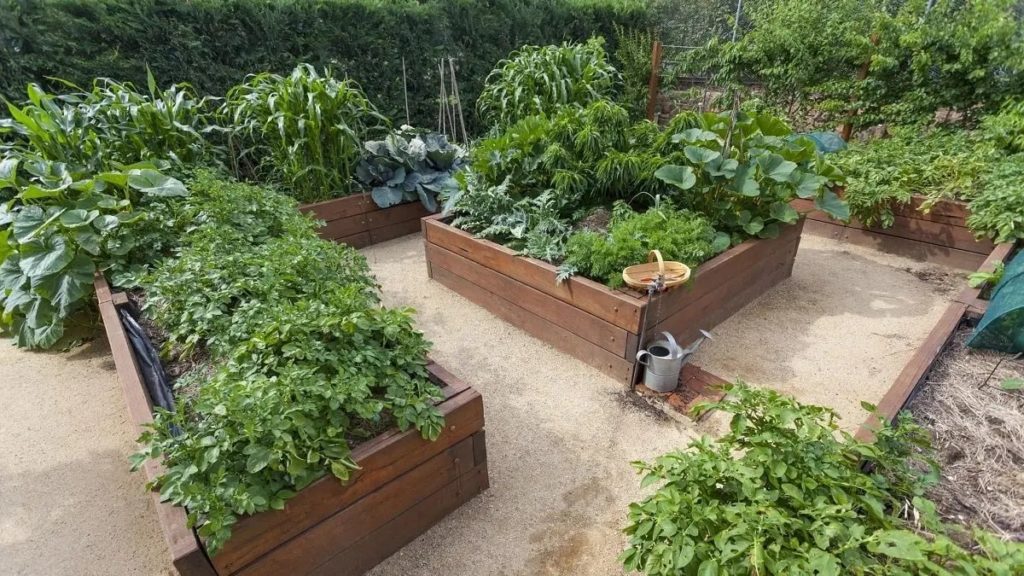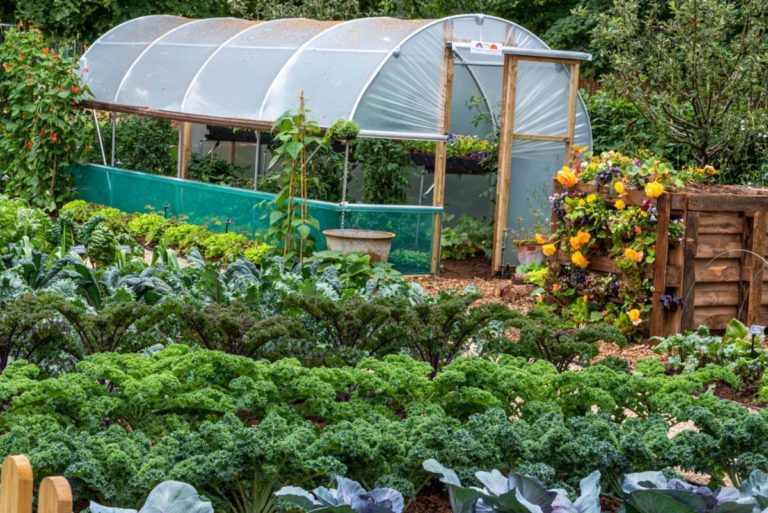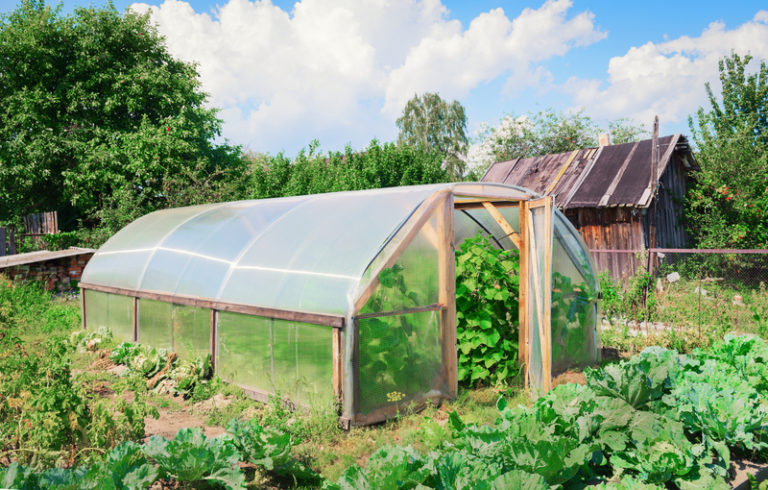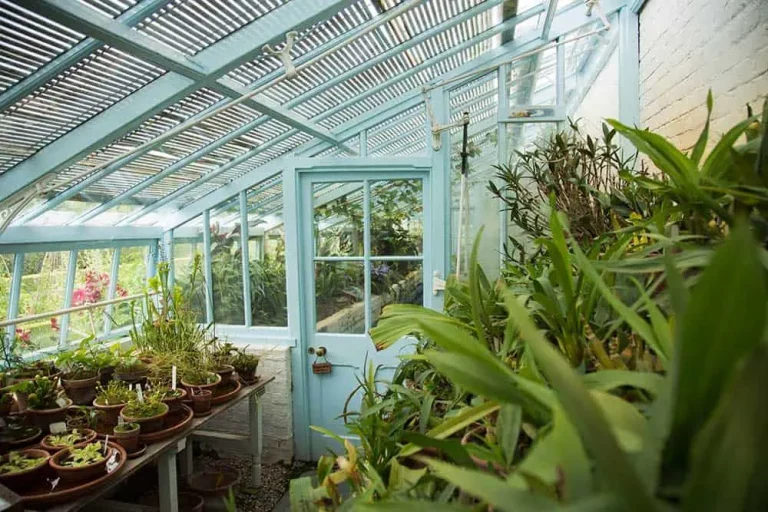Are you tired of struggling with soil quality and plant growth in your traditional garden beds?
Do you dream of growing healthy, vibrant crops without the hassle of weeding and compacting soil?
Look no further than raised bed gardening!
With its numerous benefits, such as improved drainage, warmer soils, and enhanced soil structure, raising your garden beds is an ideal solution for any aspiring gardener.
And with this ultimate guide, you’ll learn everything you need to know to build the perfect raised beds for your specific needs and climate.
From choosing the right materials and sizes, to constructing and maintaining your raised beds, we’ve got you covered!
Let’s get started on building your ultimate raised bed garden today!
Choose the right location
Raised beds should be located in an area that receives at least 6 hours of direct sunlight per day. Also, avoid placing the beds near trees or large structures that may cast shadows on the beds.
Raised beds should be situated in an area that receives at least 6 hours of direct sunlight per day to ensure optimal growing conditions.
Avoid placing the beds near trees or large structures that may cast shadows on the beds, as this can hinder the growth of your plants.
Instead, choose a location that receives full sun, ideally with a southern exposure.
Be mindful of any overhead obstructions, such as power lines or satellite dishes, that may block sunlight access.
By choosing the right location, you’ll be well on your way to successful raised bed gardening.
Determine the size of your raised bed
Decide on the size of your raised bed based on the space you have available, the amount of produce you want to grow, and the accessibility of the bed for maintenance.
Determining the size of your raised bed is a important step in the planning process.
Based on the space you have available, consider how much room you have to work with and how many plants you want to fit within the bed.
A good rule of thumb is to allocate around 3-4 square feet of space per plant, depending on the maturity size of the plant and the growing conditions.
For example, if you want to grow tomatoes, you may want to allow for more space per plant since they can grow quite large.
In addition to considering the amount of space you have available, also think about the accessibility of the bed for maintenance.
A larger bed may be more difficult to reach and maintain, so you may want to opt for a smaller size if you have limited mobility or limited access to the area.
On the other hand, if you have plenty of space and are looking to grow a large amount of produce, a larger raised bed may be the way to go.
Ultimately, the size of your raised bed will depend on your specific needs and preferences.
Select the right materials
Choose materials that are durable, rot-resistant, and attractive. Wood is a popular choice, but other options include concrete blocks, brick, and stone.
When it comes to selecting the right materials for your landscaping project, durability, rot-resistance, and attractiveness are key factors to consider.
Wood is a popular choice for outdoor structures and features, but it can be prone to rot and decay if not properly treated and maintained.
To ensure long-lasting durability, consider alternative materials like concrete blocks, brick, and stone.
These materials are resistant to rot and can withstand harsh weather conditions, making them excellent choices for outdoor spaces.
They come in a variety of textures and colors, allowing you to create a unique and visually appealing design.
By selecting the right materials for your landscaping project, you can ensure that your outdoor space is both functional and aesthetically pleasing for years to come.
Prepare the site
Clear the area of any debris, weeds, or rocks. Level the ground and create a flat base for your raised bed.
Level the ground and create a flat base for your raised bed
To prepare your site for a raised bed garden, start by clearing the area of any debris, weeds, or rocks.
Use a rake or a garden fork to remove any unwanted materials and create a clean slate.
Next, level the ground to ensure a flat and stable base for your raised bed.
You can use a level or a string line to check the levelness of the ground and make any necessary adjustments.
Once the ground is level, create a flat base for your raised bed by filling the area with a layer of compacted soil or gravel.
This will provide a stable foundation for your raised bed and help prevent settling or shifting over time.
By taking these steps to prepare your site, you’ll be able to create a sturdy and functional raised bed garden that will produce bountiful harvests for years to come.
Build the frame
Build a frame for your raised bed using 2×4 lumber, or other materials. The frame should be at least 4 inches tall and wide enough to support the soil depth you desire.
Building the frame for your raised bed is an essential step in creating a successful garden.
You can use 2×4 lumber or other materials to construct the frame, ensuring it is at least 4 inches tall and wide enough to support the soil depth you desire.
To start, lay out the four corners of the frame, using stakes or string to mark the corners.
Then, connect the corners with horizontal braces every 2 feet to create a sturdy base.
Next, add vertical braces at regular intervals to create a stable and rigid frame.
Use screws or nails to secure the frame components together.
Once the frame is built, you can add the soil and start planting your garden.
With a sturdy frame, your raised bed will provide a perfect environment for your plants to thrive.
Remember to use pressure-treated lumber or redwood to resist rot and extend the life of your raised bed.
You can use recycled materials like old pallets or concrete blocks to build the frame, making it an environmentally friendly option.
Make sure the frame is level and securely anchored to the ground to prevent it from shifting or collapsing over time.
Add soil
Fill your raised bed with a mix of topsoil, compost, and other organic matter. The soil should be at least 4 inches deep and well-draining.
When it comes to adding soil to your raised bed, it’s important to choose a high-quality mix that will provide your plants with the nutrients and support they need to thrive.
A mix of topsoil, compost, and other organic matter is ideal, as it will offer a well-rounded blend of nutrients, improve soil structure, and promote healthy drainage.
Aim for a depth of at least 4 inches, as this will provide adequate space for root growth and allow for proper watering and aeration.
Be sure to mix the soil well to ensure a consistent composition throughout the bed.
This will help your plants establish strong roots and prevent nutrient deficiencies.
By taking these steps, you’ll be giving your plants the best possible start in their new home, setting them up for a healthy and productive growth cycle.
Install drainage
To prevent waterlogging, install a drainage system, such as a PVC pipe, at the bottom of the raised bed. This will allow excess water to drain out of the bed and prevent waterlogged soil.
To effectively prevent waterlogging in your raised bed garden, installing a drainage system is a important step.
One practical and affordable option is to use PVC pipes as the drainage medium.
By laying down the PVC pipes at the bottom of the raised bed, you create a pathway for excess water to escape and prevent waterlogged soil.
This setup ensures that your plants receive the optimal amount of moisture and oxygen, as water is allowed to drain out without accumulating in the soil.
By actively installing drainage, you create a well-draining environment for your plants, enhancing their growth and overall health.
This preemptive measure can save you the hassle and potential damage of dealing with waterlogged soil in the long run.
Add plants
Once your raised bed is built and the soil is prepared, you can start planting your favorite vegetables, herbs, or flowers. Choose plants that are well-suited to the climate and lighting conditions of your area.
When selecting plants for your raised bed garden, it’s important to consider the climate and lighting conditions of your area.
Different plants have different temperature and light requirements, and some may not thrive in certain environmental conditions.
For example, if you live in a hot and dry climate, you may want to choose plants that are drought-tolerant and can handle high temperatures, such as tomatoes, peppers, and cucumbers.
On the other hand, if your climate is cool and damp, you may want to choose plants that prefer cooler temperatures and more moisture, such as broccoli, kale, and carrots.
In addition to climate, you should also consider the lighting conditions in your raised bed garden.
Most vegetables and flowers require at least six hours of direct sunlight per day to thrive.
However, some plants can tolerate partial shade, such as lettuce, spinach, and herbs like basil and mint.
When selecting plants, be sure to check the lighting requirements for each variety to ensure they will get the right amount of sunlight.
By choosing plants that are well-suited to the climate and lighting conditions of your area, you can ensure that your raised bed garden will be successful and productive, providing you with delicious and healthy produce all season long.
Want More? Dive Deeper Here!
Hey there! If you’re the type who loves going down the rabbit hole of information (like we do), you’re in the right spot. We’ve pulled together some cool reads and resources that dive a bit deeper into the stuff we chat about on our site. Whether you’re just killing time or super into the topic, these picks might just be what you’re looking for. Happy reading!






